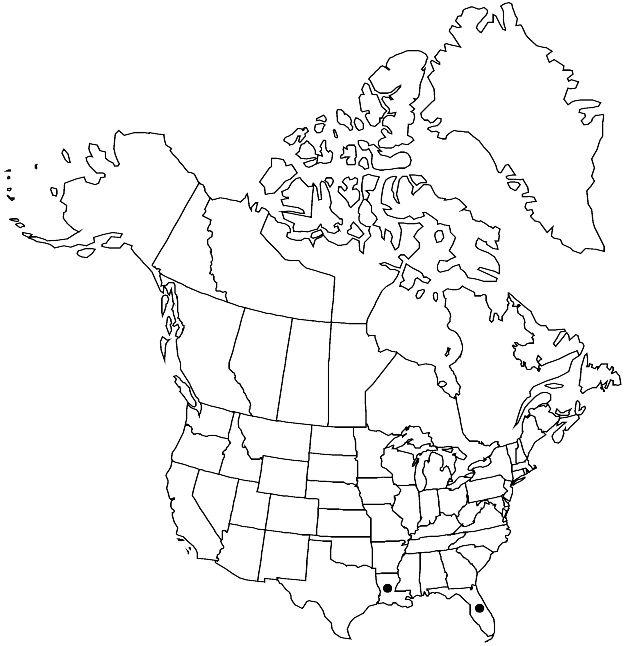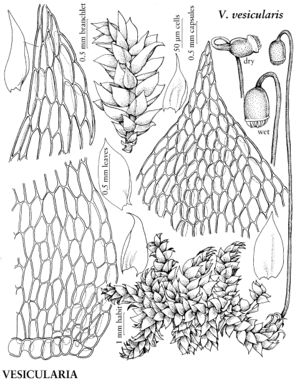Vesicularia vesicularis
in H. G. A. Engler and K. Prantl, Nat. Pflanzenfam. 232/233[I,3]: 1094. 1908.
Stems with branches horizontal, somewhat flattened, simple; epidermal cells in 2–4 rows, walls thick, inner cells larger, walls thick, central strand cell walls thin. Leaves somewhat contorted when dry, plane, sometimes falcate-secund; ventral branch leaves ovate to oblong-ovate, 1.1 mm; apex apiculate to acuminate; alar cells not or slightly differentiated; basal laminal cells more elongate than distal cells; distal cells lax, hexagonal to oblong-rhomboidal, 2.5–5:1, walls thick to thin; dorsal and lateral branch leaves ovate, broadly oblong-ovate, or ovate-lanceolate, 1.1 mm; apex acute to acuminate; basal laminal cells more elongate than distal cells; distal cells hexagonal, oblong-hexagonal to somewhat rhomboidal, 2.3–4.1:1, walls usually thick; marginal cells noticeably narrower. Seta 1.3–2.1 cm, flexuose, curved just below capsule. Capsule 0.9 mm; exothecial cells quadrate to rectangular, walls thin, often collenchymatous; stomata at extreme base of capsule; exostome teeth brown.
Phenology: Capsule maturity unknown.
Habitat: Shaded, moist soil, humus, logs, rock, submerged rock in running water
Elevation: low elevations
Distribution

Fla., La., Mexico, Central America, South America.
Discussion
Vesicularia vesicularis has been introduced in greenhouses, for example, at the Missouri Botanical Garden Climatron©, and on sides of goldfish pools in California.
Selected References
None.
